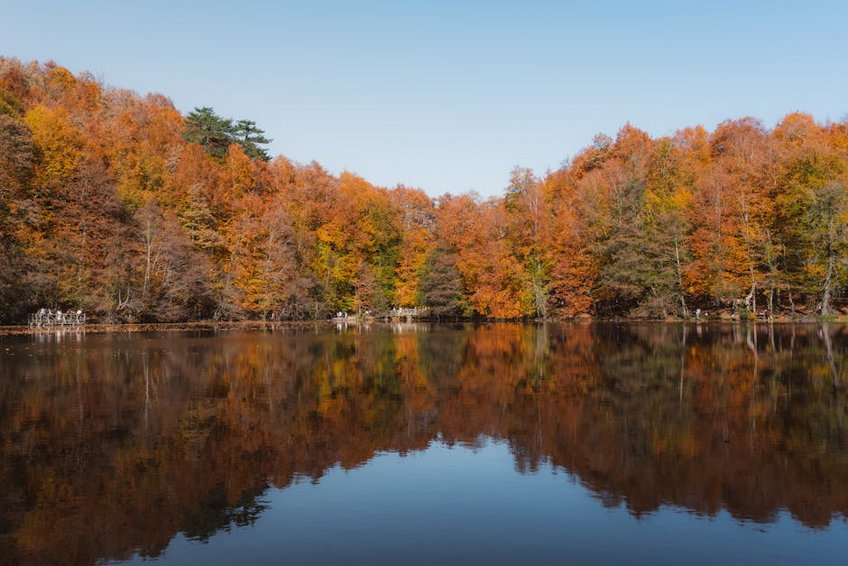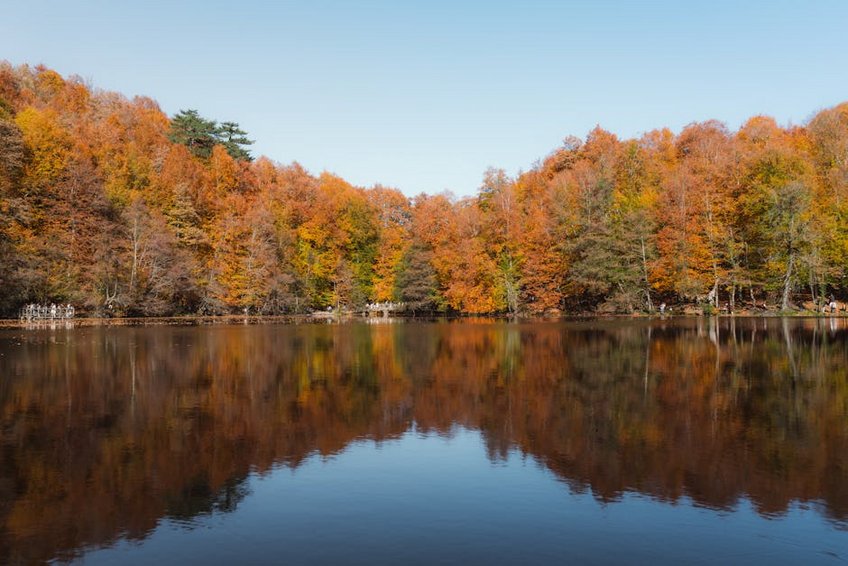Yedigöller National Park: Your Ultimate Guide to Turkey’s Seven Lakes Paradise
Nestled in the verdant embrace of the Western Black Sea region, Yedigöller National Park stands as one of Turkey’s most breathtaking natural treasures, offering a serene escape into a world where seven stunning glacial lakes mirror the surrounding ancient forests. This park, whose name literally translates to “Seven Lakes,” provides an unparalleled experience for nature lovers, photographers, and anyone seeking tranquility away from urban chaos. The moment you step into Yedigöller National Park, you’re greeted by a symphony of rustling leaves, chirping birds, and the gentle lapping of lake waters against pebbled shores. Each season paints the landscape with a different palette—vibrant greens in spring, cool shades in summer, fiery reds and oranges in autumn, and a pristine white blanket in winter. Whether you’re an avid hiker, a camping enthusiast, or simply someone who appreciates natural beauty, Yedigöller National Park promises memories that will last a lifetime. The park’s diverse ecosystem supports numerous plant and animal species, making it a vital conservation area and a perfect destination for eco-tourism.
Yedigöller National Park Essential Information – What Every Traveler Should Know
Before embarking on your journey to Yedigöller National Park, it’s crucial to understand its geographical and historical context. Located in the Bolu province, approximately 42 kilometers from the city center, the park spans over 2,019 hectares and sits at an elevation of around 900 meters. Established as a national park in 1965, Yedigöller was one of Turkey’s first protected areas, highlighting its ecological significance. The seven lakes—Büyükgöl, Seringöl, Deringöl, Nazlıgöl, Küçükgöl, İncegöl, and Sazlıgöl—were formed by landslides thousands of years ago, creating a unique topography that fascinates geologists and visitors alike. The park’s flora includes majestic beech, oak, hornbeam, and pine trees, some of which are centuries old. Wildlife enthusiasts might spot deer, roe deer, wild boar, and even the occasional brown bear or wolf, though these are more elusive. The area experiences a humid continental climate, with cool summers and cold, snowy winters, making it a year-round destination with seasonal variations.
Park History and Ecological Significance – What Makes It Special
- Yedigöller National Park was established in 1965, making it one of Turkey’s oldest protected areas, primarily to conserve its unique glacial lakes and rich biodiversity.
- The park plays a critical role in scientific research, particularly in forestry and ecology, with ongoing studies on native species and habitat preservation.
- It serves as an important watershed, supplying fresh water to surrounding regions and maintaining the ecological balance of the Western Black Sea area.
- Budget travelers can expect to spend around $30-50 per day by camping in the park (if available) or staying in hostels in nearby towns, cooking their own meals, and using public transportation.
- Mid-range visitors might budget $80-120 per day for comfortable guesthouses or hotels in Bolu, dining at local restaurants, and renting a car for flexibility.
- Luxury experiences could cost $150+ per day, including stays at high-end resorts, guided tours, private transfers, and fine dining in the region.
- Bolu Governorate Official Tourism Portal
- Lonely Planet Black Sea Coast Travel Guide
Geographical Features and Lake Formation – Nature’s Masterpiece
The seven lakes of Yedigöller National Park were created by massive landslides that blocked valleys, resulting in natural dams and the formation of these stunning water bodies. Each lake has its own character—Büyükgöl is the largest and most visited, while Sazlıgöl is surrounded by reeds and offers a more secluded atmosphere. The terrain is rugged yet accessible, with well-marked trails that guide you through dense forests, past cascading streams, and up to viewpoints that offer panoramic vistas of the lakes below. The elevation changes within the park create microclimates that support diverse plant life, from moss-covered rocks to towering trees. This varied landscape not only enhances the park’s beauty but also provides habitats for numerous animal species, making every hike an opportunity for discovery.

Yedigöller National Park Planning Your Trip – Seasons, Budget, and Preparation
Planning a visit to Yedigöller National Park requires careful consideration of timing, budget, and necessary preparations to ensure a smooth and enjoyable experience. The park is accessible year-round, but each season offers distinct advantages and challenges. Spring and autumn are particularly popular due to mild weather and stunning natural displays—spring brings wildflowers and newborn wildlife, while autumn showcases a spectacular array of fall colors. Summer provides cool retreats from the heat, and winter transforms the park into a snowy wonderland ideal for photography and solitude. Your budget will depend on travel style, with options ranging from budget-friendly camping to more comfortable stays in nearby towns. It’s essential to pack appropriately for the season, including sturdy footwear, weather-resistant clothing, and supplies for outdoor activities. Advance bookings are recommended during peak seasons to secure accommodation and avoid crowds.
Best Time to Visit Yedigöller National Park
The ideal time to visit Yedigöller National Park largely depends on your preferences. Autumn, particularly from late September to early November, is considered the prime season due to the breathtaking fall foliage that blankets the landscape in shades of gold, red, and orange. This period attracts photographers and nature enthusiasts from around the world. Spring (April to June) is equally beautiful, with blooming flowers and active wildlife, making it perfect for hiking and birdwatching. Summer (July and August) offers pleasant temperatures, rarely exceeding 25°C (77°F), providing a cool escape from Turkey’s coastal heat. Winter (December to February) is cold and snowy, with temperatures often dropping below freezing, but it creates a magical, quiet atmosphere for those willing to brave the cold. Weekdays are generally less crowded than weekends, regardless of the season.
Budget Planning and Costs for Your Adventure
Essential Preparation Checklist – Don’t Forget These!
Proper preparation is key to enjoying Yedigöller National Park to the fullest. Start by checking weather forecasts and park conditions, as trails can be muddy or closed due to weather. Pack layered clothing to adapt to temperature changes, especially if visiting in spring or autumn. Sturdy hiking boots are a must for navigating uneven terrain, and a waterproof jacket will protect against sudden rain showers. Bring sufficient water and snacks, as facilities within the park are limited. Don’t forget your camera to capture the stunning scenery, and consider binoculars for wildlife spotting. If camping, ensure you have a reliable tent, sleeping bag, and cooking equipment. It’s also wise to carry a basic first-aid kit, a map of the park (digital or physical), and a power bank for your devices. Lastly, inform someone of your plans and expected return time for safety.
Yedigöller National Park Top Attractions and Activities – Explore the Wonders
Yedigöller National Park offers a wealth of attractions and activities that cater to all interests and fitness levels. The seven lakes themselves are the main draw, each with its unique charm and opportunities for relaxation and exploration. Hiking is the primary activity, with well-maintained trails ranging from easy walks around the lakes to more challenging routes through forested hills. Birdwatching is exceptional here, with species like woodpeckers, owls, and various migratory birds frequenting the area. Photography enthusiasts will find endless subjects, from mirror-like lake reflections to detailed macro shots of fungi and insects. Fishing is permitted in certain lakes, with trout being a common catch, though permits may be required. Picnicking by the lakeshores is a popular pastime, with designated areas providing tables and benches. In winter, the park becomes a hub for snowshoeing and cross-country skiing, offering a completely different but equally mesmerizing experience.
Must-See Highlights – The Lakes and Viewpoints
No visit to Yedigöller National Park is complete without seeing each of the seven lakes, but Büyükgöl deserves special attention as the largest and most accessible. Its calm waters perfectly reflect the surrounding forest, creating iconic photo opportunities, especially at sunrise or sunset. Seringöl is known for its deep blue hue and peaceful ambiance, while Deringöl offers a more rugged setting with rocky shores. Nazlıgöl is often considered the most romantic, with secluded spots perfect for quiet contemplation. Don’t miss the Kapankaya viewpoint, which provides a panoramic vista of multiple lakes and the vast forest canopy—it’s a moderate hike but well worth the effort. Another highlight is the ancient trees scattered throughout the park, some estimated to be over 400 years old, standing as silent witnesses to the passage of time. These natural monuments add a sense of history and grandeur to your exploration.
Hidden Gems and Local Favorites – Beyond the Main Trails
While the main lakes attract most visitors, Yedigöller National Park holds several hidden gems that offer solitude and unique experiences. Explore the smaller trails leading to Sazlıgöl, where reeds and wetlands create a habitat for amphibians and waterfowl, often overlooked by crowds. The stream connecting some of the lakes is perfect for quiet moments listening to the gentle flow of water over rocks. Local favorites include early morning walks when mist rises from the lakes, creating an ethereal atmosphere that feels almost magical. For those interested in flora, the park’s lesser-visited areas host rare orchids and ferns, especially during spring. If you’re lucky, you might encounter forest residents like squirrels or deer in these quieter zones. Engaging with park rangers can also reveal seasonal secrets, such as the best spots for berry picking in late summer or mushroom foraging in autumn, though always follow sustainable practices.
Yedigöller National Park Practical Travel Information – Transportation and Accommodation
Reaching Yedigöller National Park requires some planning, as it’s nestled in a relatively remote area, but the journey is part of the adventure. The nearest major city is Bolu, which is well-connected by road to Istanbul (about 3-4 hours drive) and Ankara (about 2 hours drive). From Bolu, you can take a dolmuş (shared minibus) or taxi to the park entrance, though services may be limited, especially outside peak seasons. Renting a car provides the most flexibility, allowing you to explore at your own pace and access trailheads easily. Within the park, transportation is primarily on foot, as vehicles are restricted to designated parking areas to preserve the natural environment. Accommodation options range from camping within the park to hotels in nearby towns like Mengen or Bolu. It’s important to note that facilities inside the park are basic, with limited electricity and no luxury amenities, emphasizing a back-to-nature experience. Booking in advance is advisable, particularly during autumn when demand is high.
| Category | Options/Features | Price Range (USD) |
|---|---|---|
| Camping | Basic sites near lakes, shared facilities | $10-20 per night |
| Guesthouses | Family-run in nearby villages, breakfast included | $40-60 per night |
| Hotels | Comfortable stays in Bolu city, amenities | $70-120 per night |


